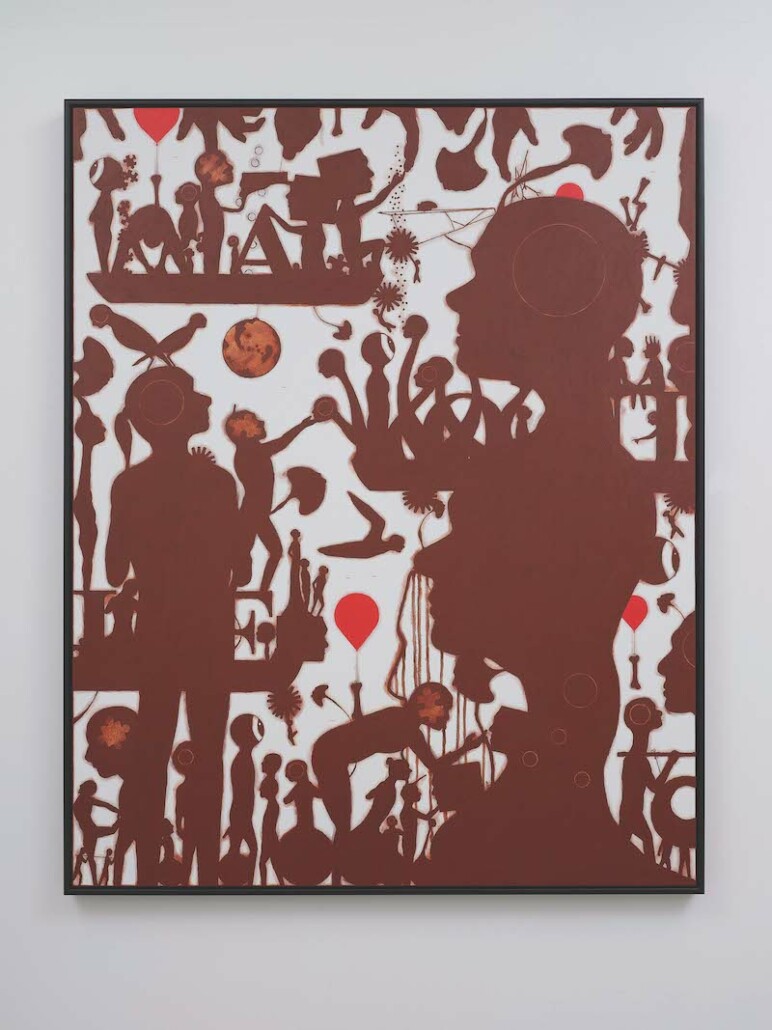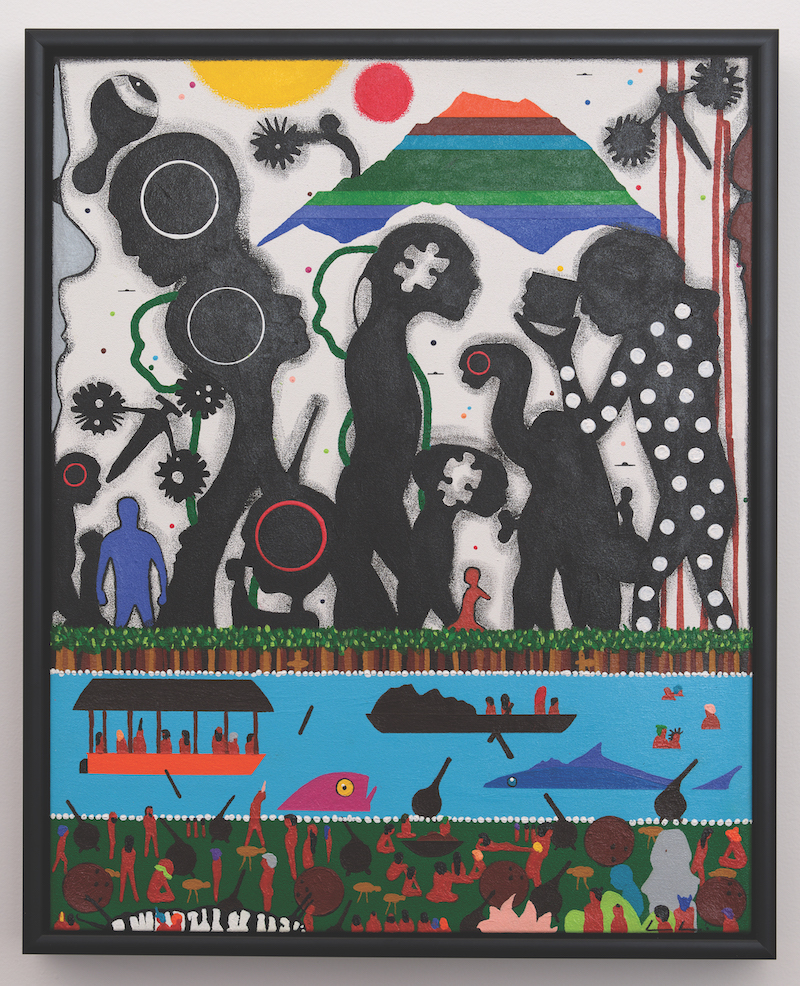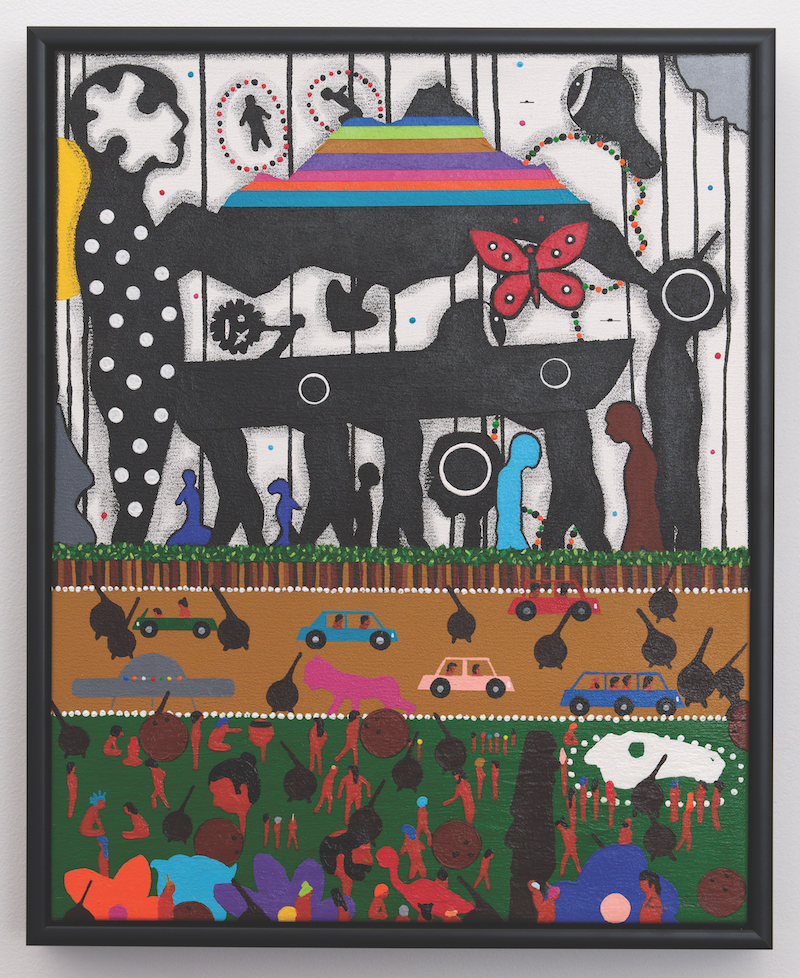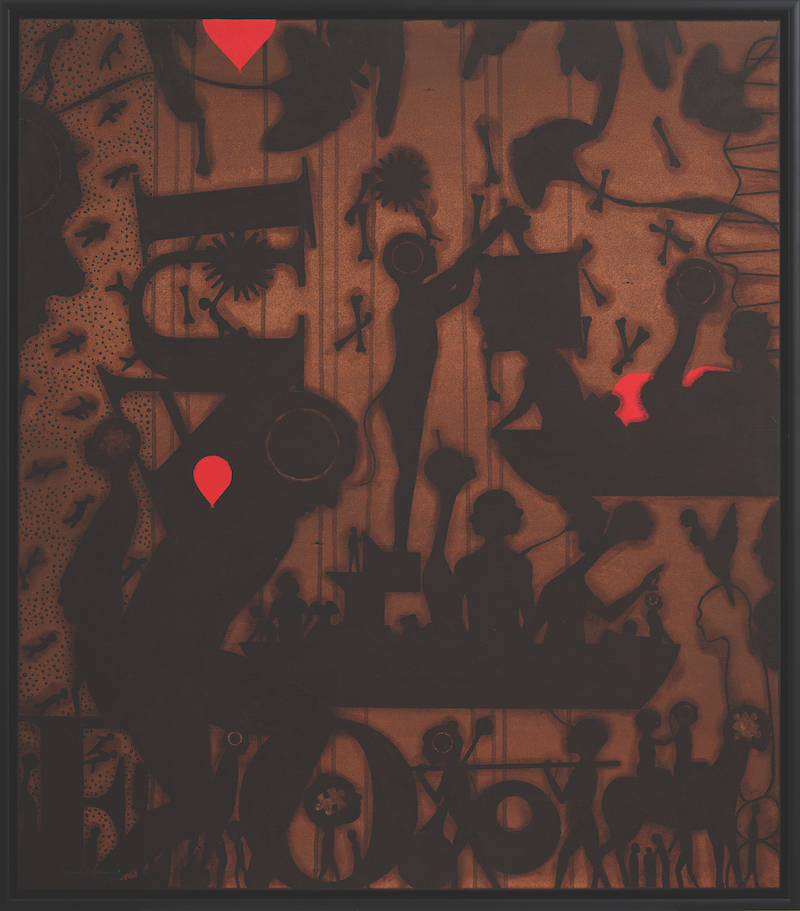Some paintings whisper, others shout. The early works of Aotearoa-based artist Andy Leleisi’uao did the latter, highlighting issues surrounding the Pacific diaspora in Aotearoa such as racism, poverty, unemployment and youth suicide. As curator Ron Brownson has written, Leleisi’uao never shied away from exploring the most gruelling subjects, his work operating “as if it was a vocal advocate prosecuting our culture’s racism”.
In the mid 2000s, the work shifted. No longer a shout, but not quite a whisper, Leleisi’uao’s work over the last 15 years feels more like a story being told, a tale that reaches into pasts both fictional and real, mixing cultures and timelines, projecting into an arcadian future, or futures. Never is this chimerical blending more apparent — or more joyful — than in The Ufological Island of Samoa series, in which the inhabitants of fictional Samoan villages exist in a halcyon past, future, or fantasy alongside robot servants, spaceships, fairies, angels and rollercoasters. In Pisepleta Village on the Ufological Island of Sāmoa, 2006, for example, circular rainbows radiate in the sky, their colours echoed in the lavalava worn by the figures dancing, climbing, playing and resting below.
When asked what drove him towards these more fantastical, utopic scenes, Leleisi’uao explains that in his early years, he wasn’t being fair towards his work: “I was using my work to express my responsibilities as an artist dealing with heavy subject matter. Eventually, this led me towards wanting to create visual narratives of different people/species trying to co-exist together.”
Leleisi’uao’s dreamlike visions remind us of the old axiom that to understand the present, we must look to the past. To tell these stories of togetherness, Leleisi’uao pulls from history, and his interest in ancient history that is particularly evident in the frieze-like compositions seen in series such as A Diasporic Pulse of Faith & Patience, 2019, which recall the narrative style of Egyptian wall paintings or the monumental bas-reliefs of Khmer temples. However, they could just as well be said to reference the panels of comic book pages, of which Leleisi’uao is a collector. In contrast to the unmitigated joy of the Ufological Island works, there is something ominous lingering beneath the surface of the canvases in Diasporic Pulse. Here are the people walking and working together; brown, black and occasionally orange figures collaborating to carry strange objects, a beer bottle, a waka, a bone patterned like a crossword puzzle. But the edges of these silhouette figures are smudged, as though they aren’t quite of this world. Some figures sport jellyfish wreathed in pulsating blue defy the confines of the panels, swimming ominously across the paintings with no respect for boundaries or narrative convention.
When asked about the ongoing use of silhouette in his work, Leleisi’uao explains, “With the silhouette works, there is no vanity. Every figure is unique but treated the same. The silhouettes are judged on their movements and not what they look like. The paint is also rubbed by my fingers, giving them a softness and an energy. There’s an intimacy, like massaging someone you love… my fingerprints are all over a silhouette painting.”
Perhaps these paintings project another kind of utopia, one in which bodies are lovingly caressed, regardless of their identity, even if a part of them is missing.
With a career spanning more than 20 years, Leleisi’uao is easily one of the most prolific and significant Pasifika artists working today. The last few years have seen him recognised as such, with his first survey exhibition, KAMOAN MINE, mounted at the Pah Homestead in 2019, followed by his acceptance of the Senior Pacific Artist award from Creative New Zealand in 2021.
Leleisi’uao will be exhibiting with ARTIS Gallery, Auckland at the upcoming Aotearoa Art Fair. His next solo exhibition will open at ARTIS in October 2023.







